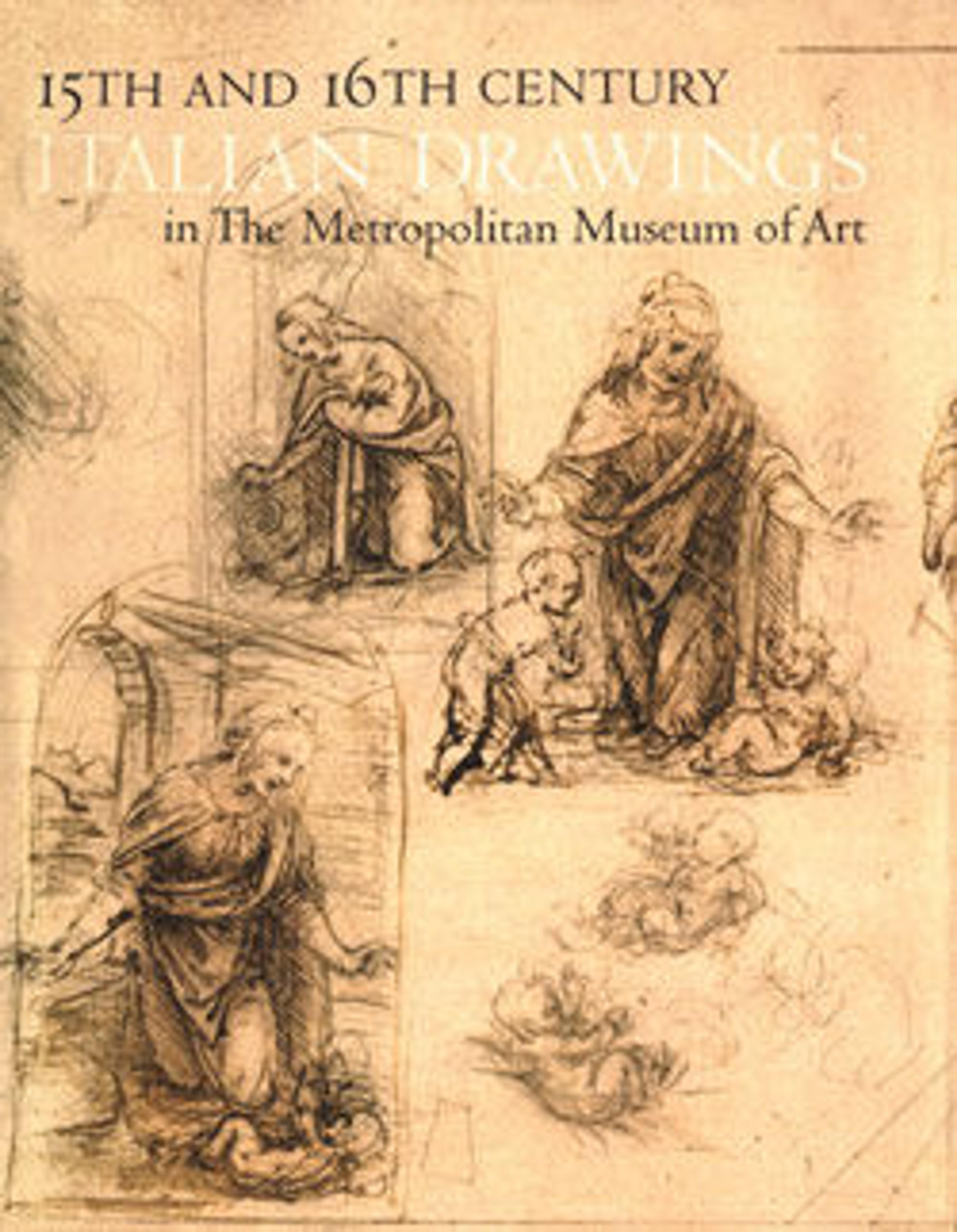Bust of a Woman with an Elaborate Coiffure
Rosso intended this drawing as an ideal representation of a beautiful young woman, in response to the genre of "teste divine" (divine heads) that Michelangelo made famous in drawings of the 1520s and 1530s, especially the "Zenobia" (Uffizi, Florence). Here, he invented elegant "s" shaped rhythms for the figural pose. The woman is seen in bust-length from the back, her head turned in profile, slightly lowered, to gaze directly at the viewer, while the exquisite complexity of details of her fashionable dress soften her pose with airy curves and twists. Her fantastic coiffure is laden with braids curled around a pair of ram's horns, while her artfully puffed-up dress, with layers of agitated drapery, is fastened on the back with a mask-like brooch. Although minor passages were touched up with ink and the figure was silhouetted with wash at a later time, the characteristic clarity and precision of Rosso's original drawing in chalk are plainly evident. The delicately ornate mount and the pen inscription below, telling the colorful, apocryphal story about the presumed subject of the drawing, are both due to the British collector John Talmann, who incorrectly thought this to be a portrait of Giulia Gonzaga (1513-1566), Contess of Fondi, a famous beauty in her day.
(Carmen C. Bambach)
(Carmen C. Bambach)
Artwork Details
- Title:Bust of a Woman with an Elaborate Coiffure
- Artist:Rosso Fiorentino (Italian, Florence 1494–1540 Fontainebleau)
- Date:1530–37
- Medium:Black chalk (Rosso Fiorentino). Probably another hand reinforced minute passages with pen and brown ink, adding also a tiny area of crosshatching within the hair arrangements. An early owner of the drawing (or an artist working for him) colored the background around the figure in brush and brown wash.
- Dimensions:9 5/16 x 6 15/16 in. (23.6 x 17.7 cm)
- Classification:Drawings
- Credit Line:Rogers Fund, 1952
- Object Number:52.124.2
- Curatorial Department: Drawings and Prints
More Artwork
Research Resources
The Met provides unparalleled resources for research and welcomes an international community of students and scholars. The Met's Open Access API is where creators and researchers can connect to the The Met collection. Open Access data and public domain images are available for unrestricted commercial and noncommercial use without permission or fee.
To request images under copyright and other restrictions, please use this Image Request form.
Feedback
We continue to research and examine historical and cultural context for objects in The Met collection. If you have comments or questions about this object record, please contact us using the form below. The Museum looks forward to receiving your comments.
